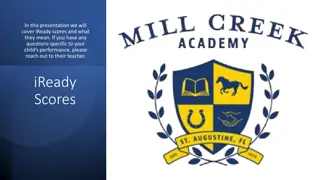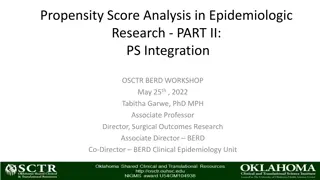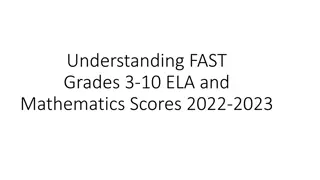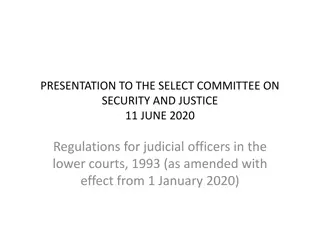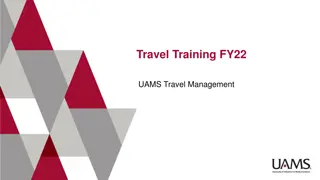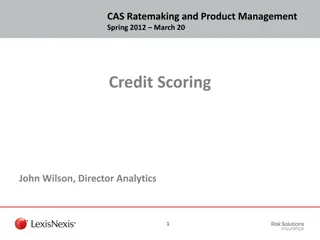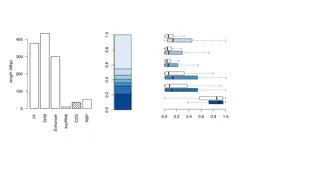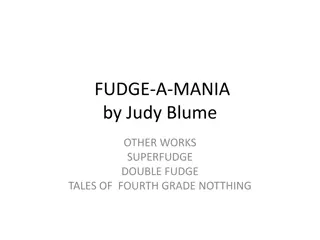Vacation Expenses Analysis and Z-scores Computation
Explore the concept of measuring dispersion using standard deviation units and calculating z-scores for a dataset related to vacation expenses. Learn how to interpret z-scores, analyze normal distributions, and apply statistical concepts to real-world scenarios involving amusement park trip heights. Discover the importance of graphical representation in understanding frequency distributions.
Download Presentation

Please find below an Image/Link to download the presentation.
The content on the website is provided AS IS for your information and personal use only. It may not be sold, licensed, or shared on other websites without obtaining consent from the author.If you encounter any issues during the download, it is possible that the publisher has removed the file from their server.
You are allowed to download the files provided on this website for personal or commercial use, subject to the condition that they are used lawfully. All files are the property of their respective owners.
The content on the website is provided AS IS for your information and personal use only. It may not be sold, licensed, or shared on other websites without obtaining consent from the author.
E N D
Presentation Transcript
1-4 Vacation Expenses OBJECTIVES Measure dispersion using standard deviation units. Compute z-scores. Find percentages using the normal curve. Compute raw scores using z-scores. Slide 1
Key Terms raw data normal curve standard score z-score normal distribution bell curve asymptomatic tails Slide 2
How can graphs help describe frequency distributions? What would help you organize data in a more visual format? Slide 3
Example 1 A summer camp is taking their 220 sixth graders on a trip to an amusement park. For safety purposes, some of the rides have height requirements. The campers heights have a mean of 56 inches and a standard deviation of 3 inches. What is the z-score for a camper with a height of 62 inches? Slide 4
Example 1 A summer camp is taking their 220 sixth graders on a trip to an amusement park. For safety purposes, some of the rides have height requirements. The campers heights have a mean of 56 inches and a standard deviation of 3 inches. What is the z-score for a camper with a height of 62 inches? Slide 5
Example 2 The height of a certain student on this trip had a z-score of -0.5. What is the student s height in inches? Slide 6
Example 2 The height of a certain student on this trip had a z-score of -0.5. What is the student s height in inches? Slide 7
Example 2 The height of a certain student on this trip had a z-score of -0.5. What is the student s height in inches? Slide 8
Example 3 Recall the amusement park trip from Examples 1 and 2. A certain ride requires riders to be at least 51 inches tall. The heights are normally distributed with mean 56 and standard deviation 3. Approximately how many of the camp s 220 sixth graders will not be allowed on the ride? Slide 9
Example 3 Recall the amusement park trip from Examples 1 and 2. A certain ride requires riders to be at least 51 inches tall. The heights are normally distributed with mean 56 and standard deviation 3. Approximately how many of the camp s 220 sixth graders will not be allowed on the ride? Slide 10
Example 3 Recall the amusement park trip from Examples 1 and 2. A certain ride requires riders to be at least 51 inches tall. The heights are normally distributed with mean 56 and standard deviation 3. Approximately how many of the camp s 220 sixth graders will not be allowed on the ride? Slide 11
Example 4 The families of students at Smithtown High School were surveyed about their vacation expenses. The results were normally distributed with mean $2,313 and standard deviation $390. What percent of the families took vacations that cost between $2,000 and $3,000? Slide 12
Example 4 The families of students at Smithtown High School were surveyed about their vacation expenses. The results were normally distributed with mean $2,313 and standard deviation $390. What percent of the families took vacations that cost between $2,000 and $3,000? Slide 13
Example 4 The families of students at Smithtown High School were surveyed about their vacation expenses. The results were normally distributed with mean $2,313 and standard deviation $390. What percent of the families took vacations that cost between $2,000 and $3,000? Slide 14
Example 4 The families of students at Smithtown High School were surveyed about their vacation expenses. The results were normally distributed with mean $2,313 and standard deviation $390. What percent of the families took vacations that cost between $2,000 and $3,000? Slide 15
Example 5 A local travel magazine rates hotels using integers from 0 to 100. Last year they rated over 2,000 hotels. The ratings were normally distributed with mean 78 and standard deviation 6.5. How high would a hotel s rating have to be for it to be considered in the top 10% of rated hotels? Slide 16
Example 5 A local travel magazine rates hotels using integers from 0 to 100. Last year they rated over 2,000 hotels. The ratings were normally distributed with mean 78 and standard deviation 6.5. How high would a hotel s rating have to be for it to be considered in the top 10% of rated hotels? invNorm(.90,0,1) 1.28 Slide 17
Example 5 A local travel magazine rates hotels using integers from 0 to 100. Last year they rated over 2,000 hotels. The ratings were normally distributed with mean 78 and standard deviation 6.5. How high would a hotel s rating have to be for it to be considered in the top 10% of rated hotels? invNorm(.90,0,1) 1.28 Slide 18










